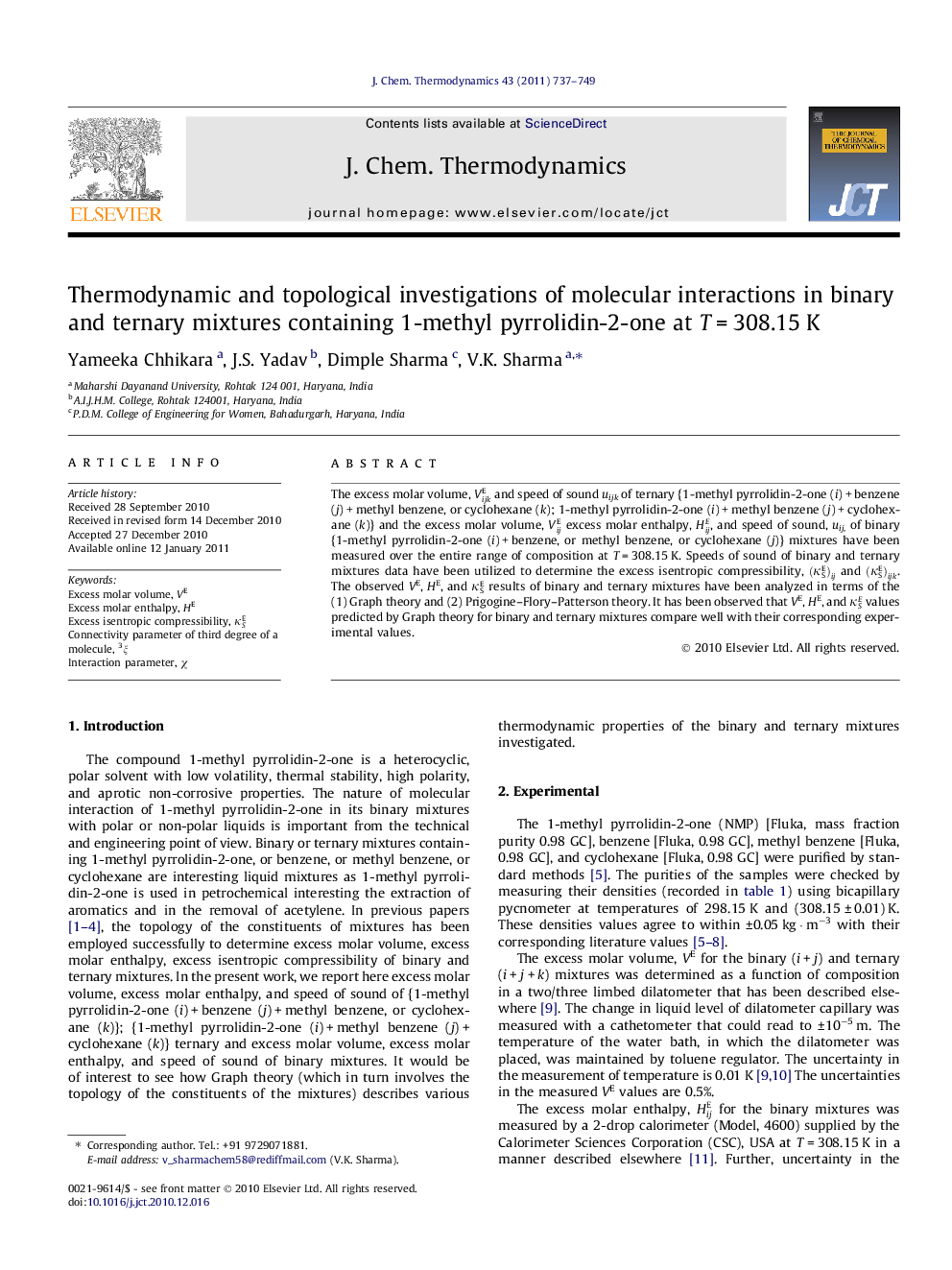| Article ID | Journal | Published Year | Pages | File Type |
|---|---|---|---|---|
| 216349 | The Journal of Chemical Thermodynamics | 2011 | 13 Pages |
The excess molar volume, VijkE and speed of sound uijk of ternary {1-methyl pyrrolidin-2-one (i) + benzene (j) + methyl benzene, or cyclohexane (k); 1-methyl pyrrolidin-2-one (i) + methyl benzene (j) + cyclohexane (k )} and the excess molar volume, VijE excess molar enthalpy, HijE, and speed of sound, uij, of binary {1-methyl pyrrolidin-2-one (i) + benzene, or methyl benzene, or cyclohexane (j)} mixtures have been measured over the entire range of composition at T = 308.15 K. Speeds of sound of binary and ternary mixtures data have been utilized to determine the excess isentropic compressibility, (κSE)ij and (κSE)ijk. The observed VE, HE, and κSE results of binary and ternary mixtures have been analyzed in terms of the (1) Graph theory and (2) Prigogine–Flory–Patterson theory. It has been observed that VE, HE, and κSE values predicted by Graph theory for binary and ternary mixtures compare well with their corresponding experimental values.
Research highlights► Excess molar volumes, VijkE and speeds of sound uijk of ternary {NMP (i) + benzene (j) + methyl benzene or cyclohexane (k); NMP (i) + methyl benzene (j) + cyclohexane (k)} and excess molar volumes, VijE excess molar enthalpies, HijE, and speeds of sound, uij, of binary {NMP (i) + benzene or methyl benzene or cyclohexane (j)} mixtures have been measured over entire range of composition at T = 308.15 K. ► Connectivity parameter of third degree of a molecule (which in turn depends upon its topology) have been employed successfully (Graph theory) to determine VE, HE, κSE data of the studied binary mixtures. ► The observed VE, HE, κSE data of the investigated mixtures have also been analyzed in terms of Prigogine- Flory-Patterson (PFP) theory. ► It has been observed that VE, HE and κSE values predicted by Graph theory for binary and ternary mixtures compare well with their corresponding experimental values. ► The VE, HE and κSE values predicted by PFP theory are of same sign (as experimental values). However, quantitative agreement is not impressive.
